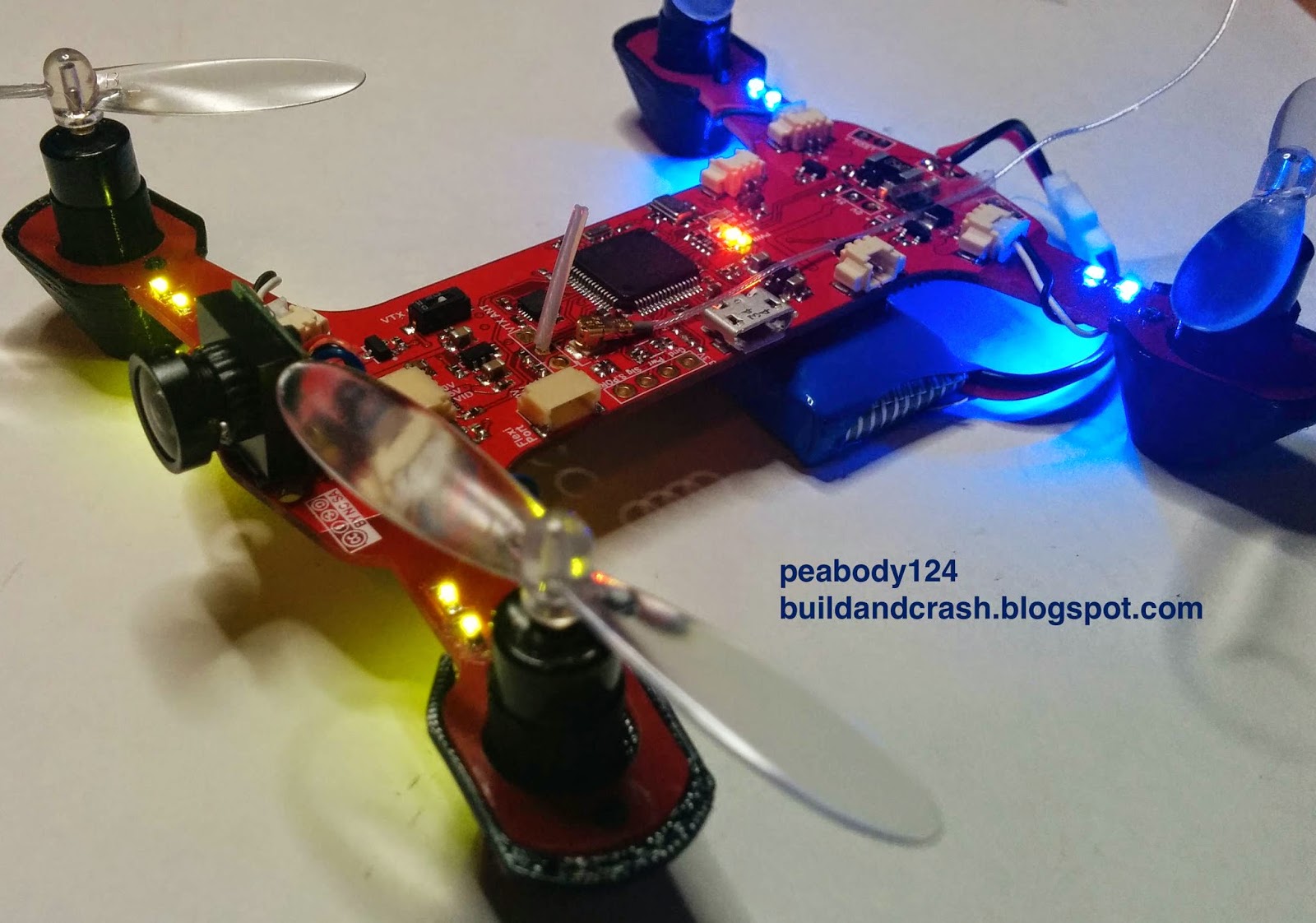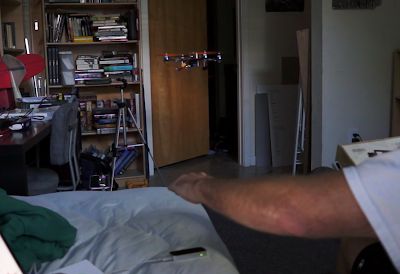This is an update on the BrushedSparky that I posted about a month ago.
I got version 0.2 back. There are a number of improvements over the previous revision.
- A bigger motor mount hole allows for stronger mounts.
- Using a 1.2 mm PCB shaves a bit of weight off.
- Changed the 5V step up regulator for a new one that is more efficient (and doesn't hum).
- Using a more available VTX module so I can build more :)
- Shuffled some components around for a slightly slimmed profile (also got a stencil to make it faster to populate).
- Current monitoring (enables mAh consumed calculation)
- Switch to disable VTX for flying LOS
- VTX channel selection via the FC
- LEDs on the arms for following via FPV
- Two additional PicoBlade connectors for clipping arms to it and making a hex. Also two more buffered outputs on the back such as for LEDs.
So far I'm really happy with it and having a great time with it. A longer writeup can be found here: http://buildandcrash.blogspot.com/2015/03/brushedsparky-v02.html

